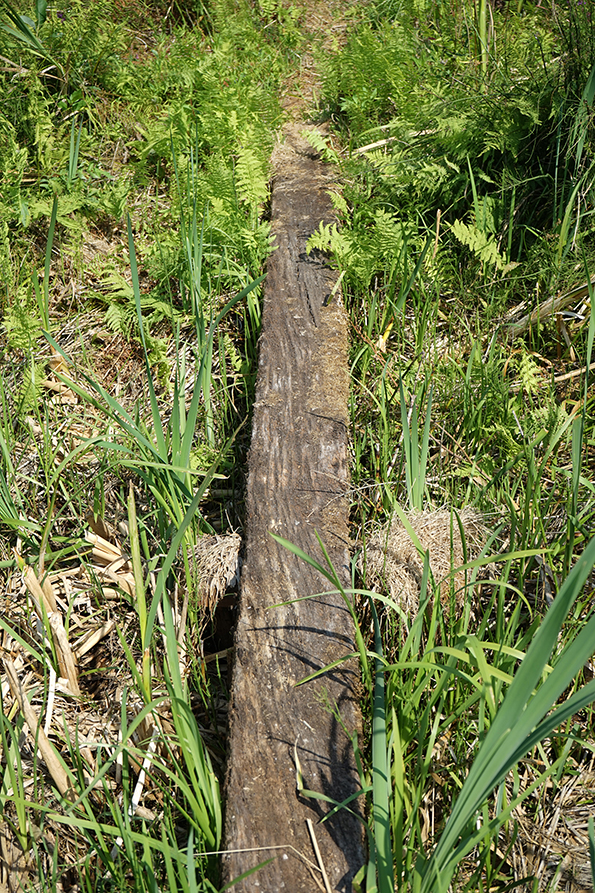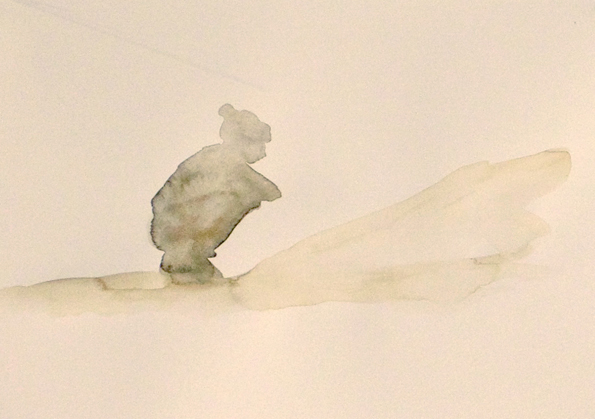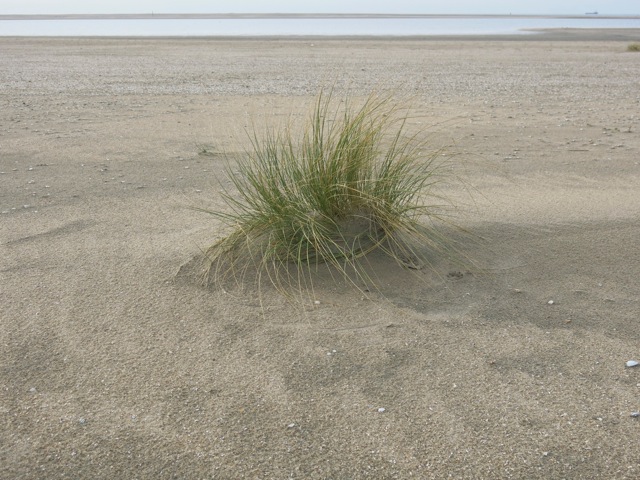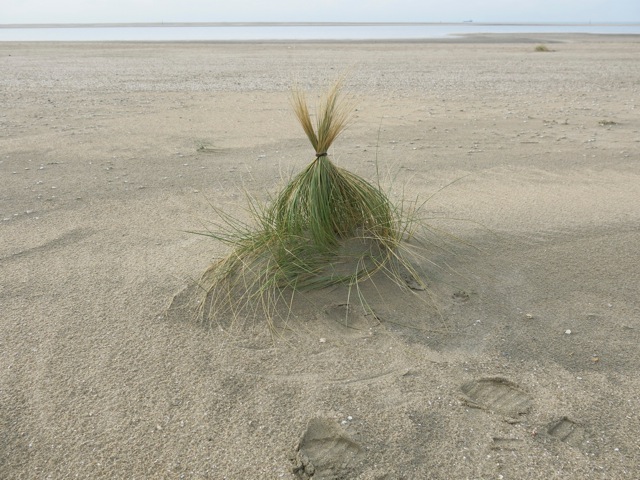Josje Hattink: Voice of a Sinking Landscape
| 2018-10-11 17:36:08
Josje Hattink (1990, NL)
www. josjehattink.com
Voice of a Sinking Landscape, 2018
Program during Climate as Artifact:
SATURDAY NOVEMBER 10
VOICE OF A SINKING LANDSCAPE BY JOSJE HATTINK
CONVERSATION ART-SCIENCE-SOCIETY
Exhibition opens at 14:00
14:30 Welkom by Jacqueline Heerema, curator of Satellietgroep
14:45-15:30 Conversation artist Josje Hattink and climate scientist Tanya Lippmann
15:30-16:00 Break
16:00-16:30 Presentation dr. J van Huissteden
16:30-17:00 Dialogue and questions
18:00 Close of the exhibition
A conversation about the artistic practice of Josje Hattink, the boundaries of art and the Horstermeerpolder and zooming out (from a scientific point of view) to relate to climate issues in the rest of the world.
Subsequently, dr. J van Huissteden (associate professor at the Vrije Universiteit Amsterdam, Faculty of Earth and Life Sciences), will give a presentation. For many years, Dr. van Huissteden has done extensive research into the emission of greenhouse gasses from peat landscapes and the possibilities of restoring wetlands. He will talk about his experiences with the sinking landscape of the Horstermeerpolder, sharing a scientific perspective with a personal opinion.
Followed by the question: how can we develop other ways to collobarate, communicatie and educate? This dialogue targets at tutors and students of art academies, technical & social humanities universities and anyone who is interested in change and challenges, living and non-living ecosystems and more.
Tutors and students of art academies, technical and social humanties studies are warmly invited to join this conversation. This program is in English.

Image: Voice of a Sinking Landscape, Josje Hattink, 2018
NL
Voice of a Sinking Landscape van de Nederlandse kunstenaar Josje Hattink verhaalt over het zinkende landschap van de Horstermeerpolder. De polder ontstond in 1882 na de inpoldering van de Horstermeer, maar worstelt sindsdien met haar bestaan. Wetenschappers en natuurbeschermers pleiten voor het herstel van dit landschap, door het weer onder water te zetten. Het verzet van bewoners leidde tot een staatsgreep (2010) en de polder werd kortstondig als onafhankelijke republiek in Nederland uitgeroepen. Hattink: “Wat mij betreft is de Horstermeerpolder een microkosmos. Ik zie dit landschap als een poëtisch toneel voor een klein verhaal over hedendaagse politiek en klimaatvraagstukken.”
Hattink houdt zich bezig met de perceptie en interpretatie van landschappen.
Tijdens haar artist-in-residency bij Satellietgroep op de Zandmotor (2015) ontstond de vraag: Wanneer je een gat kuil graaft, ontstaat dan ook vanzelfsprekend een berg? Haar fascinatie voor veen ontstond tijdens haar volgende residency bij Kunsthuis SYB (2017). Gebieden waarin letterlijk de bodem waarop je staat wordt weggegraven, om nieuw land te creëren om op te leven; zoals veengebieden, polders, duinen, dijken. We verplaatsen grote massa’s grondstoffen over het aardoppervlak en trekken zichtbare sporen in zowel natuur als cultuur.
EN
Voice of a Sinking Landscape by Dutch artist Josje Hattink speaks about the sinking landscape of the Horstermeer polder. The polder was established in 1882 after the drainage of lake Horstermeer, but has been struggling with its existence ever since. Scientists and nature conservationists argue for the restoration of this landscape by flooding it. The resistance of the local residents against this led to a coup (2010) and the polder was briefly declared as an independent republic within the Netherlands. Hattink: “As far as I am concerned, the Horstermeerpolder is a microcosmos. I see this landscape as a poetic scenery for a small story about contemporary politics and climate issues."
In her practice, Hattink questions the perception and interpretation of landscapes.
During her artist-in-residency with Satellietgroep on the Zandmotor (2015), the question arose: When one digs a hole, does that automatically generate a mound? Her fascination for peat arose during her next residency at Kunsthuis SYB (2017). Literally digging away the soil underneath your feet, to create new land to live on; peatlands, polders, dunes, dikes. We move large masses of raw material across the surface of the earth, leaving visible traces in both nature and culture.
Met dank aan / With special thanks to:
Drs. Tanya Lippmann, Dr. J van Huissteden, Jan Zwagerman en Klaske Andela, Jan Siteur, Henk Stuyver (President), de bewoners van de Horstermeerpolder, Cynthia Bruining, Jan Wilshaus, Tineke Gebbeken, Historische Kring Nederhorst ten Berg, Waterschap AGV, Natuurmonumenten, Joost Koskamp en Matthias König.
WHAT ARE WE SINKING ABOUT? - JOSJE HATTINK, 2018
Work in progress, presented during Uptime_ at Nest The Hague, part of the pro program of Climate at Artifact, June 2018.
Artist Josje Hattink and climate scientist Tanya Lippmann (ENG)
"Rising sea levels. Sinking lands. Not an ideal combination. Josje Hattink (artist) and Tanya Lippmann (climate scientist) both hold practices that deal with issues of change in the Dutch landscape: the effects of climate change and man-made alterations to the land. In their collaborative project, Hattink and Lippmann endeavor to compare and explore their different methods and perspectives on the matter. As a try-out, they will unite their voices in a lecture performance. What are we sinking about? And how to change our minds?"
MISTAKING CLOUDS FOR MOUNTAINS - JOSJE HATTINK, 2015
During her residency at the Zandmotor, Josje Hattink set herself the task of digging a way through the morphology of sandy volumes. To contain a dune in it's ever changing shapes and volumes before the sand slips through your fingers. Positive as a pile, negative as a hole. When does sand become a whole?
Presented during Public EXpedition Zandmotor#2 Cultural Geology, 2015.Parelle artist-in-residency with Theun Karelse and Esther Kokmeijer.
With special thanks to hydrologist Hein de Jonge, geologist Bert van der Valk, dune researchers Bas Arens, Kees Vertegaal, Locatie Z at Villa Ockenburgh.



Images: Josje Hattink
